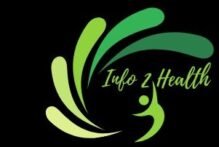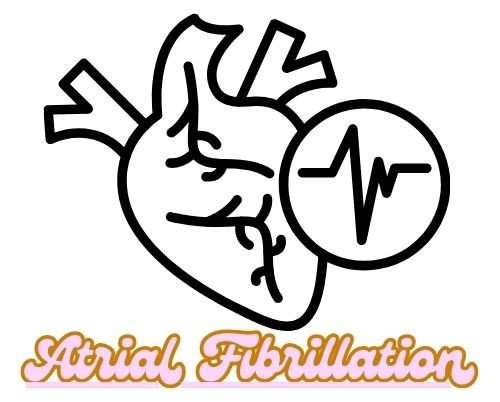What is Atrial Fibrillation?
Atrial fibrillation (AFib) is a common heart rhythm disorder characterized by an irregular and often rapid heartbeat. In AFib, the heart’s two up per chambers (the atria) experience chaotic electrical signals, leading to ineffective contractions and increased risk of complications such as stroke and heart failure. AFib can be intermittent (paroxysmal), persistent, or permanent, affecting millions of people worldwide.
Types of Atrial Fibrillation
- Paroxysmal AFib: Episodes come and go, often stopping on their own within a week.
- Persistent AFib: Lasts longer than a week and requires treatment to restore a normal heart rhythm.
- Permanent AFib: The arrhythmia is continuous, and attempts to restore a normal rhythm are no longer pursued.
Causes of Atrial Fibrillation (AFib)
Atrial fibrillation (AFib) can result from a variety of factors, both cardiac and non-cardiac. Understanding these causes is crucial for effective prevention and management. Here’s a closer look at the major contributors to AFib:
1. Heart-Related Conditions
- Hypertension (High Blood Pressure): Chronic high blood pressure can lead to changes in the heart’s structure and electrical system, increasing the likelihood of AFib.
- Coronary Artery Disease: Narrowing of the arteries due to plaque buildup can restrict blood flow to the heart muscle, potentially leading to arrhythmias, including AFib.
- Heart Valve Disorders: Conditions affecting the heart valves, particularly mitral valve stenosis or regurgitation, can cause changes in blood flow and pressure in the atria, triggering AFib.
- Heart Failure: In heart failure, the heart’s ability to pump blood effectively is compromised, leading to fluid buildup and pressure changes in the heart that may precipitate AFib.
- Previous Heart Surgery: Surgical interventions on the heart can disrupt its normal electrical pathways, increasing the risk of AFib post-operation.
2. Non-Heart-Related Conditions
- Hyperthyroidism: An overactive thyroid can increase heart rate and trigger AFib by affecting the body’s metabolic rate and heart function.
- Chronic Lung Diseases: Conditions like chronic obstructive pulmonary disease (COPD) and pulmonary hypertension can strain the heart and affect its rhythm.
- Sleep Apnea: Obstructive sleep apnea leads to intermittent oxygen deprivation, which can result in increased heart rate and trigger AFib episodes.
3. Lifestyle Factors
- Excessive Alcohol Consumption: Heavy drinking can lead to “holiday heart syndrome,” a temporary condition in which AFib episodes occur following a binge drinking episode.
- Caffeine and Stimulants: While moderate caffeine intake is generally safe, excessive consumption can lead to increased heart rate and potential AFib.
- Obesity: Increased body weight is linked to higher blood pressure and changes in heart structure, both of which elevate the risk for AFib.
4. Electrolyte Imbalances
- Low Levels of Electrolytes: Electrolytes like potassium, magnesium, and calcium are crucial for maintaining normal heart rhythm. Imbalances can lead to disturbances in electrical signals, causing AFib.
5. Other Factors
- Stress and Anxiety: High levels of emotional stress can activate the sympathetic nervous system, which may lead to increased heart rate and AFib episodes.
- Viral Infections: Certain infections, particularly those affecting the heart (like myocarditis), can trigger AFib due to inflammation or damage to heart tissue.
- Age: The risk of developing AFib increases with age due to natural changes in the heart’s electrical system and the accumulation of heart-related conditions.
- Genetics: There may be a hereditary component, as AFib can run in families. Certain genetic mutations may predispose individuals to arrhythmias.
Atrial fibrillation is a multifactorial condition influenced by a range of cardiac and non-cardiac factors, lifestyle choices, and underlying health conditions. Identifying and managing these causes is essential for preventing AFib and reducing the risk of associated complications, such as stroke. If you have risk factors for AFib or experience symptoms, consulting with a healthcare professional is vital for a comprehensive evaluation and tailored management plan.
Symptoms of Atrial Fibrillation
The symptoms of AFib can vary widely among individuals. Some people may experience significant symptoms, while others may be asymptomatic. Common symptoms include:
- Palpitations: A feeling of fluttering or a racing heartbeat.
- Dizziness or lightheadedness: Especially during episodes of rapid heart rate.
- Shortness of breath: Can occur at rest or during physical activity.
- Fatigue: A general feeling of tiredness that may be more pronounced during exertion.
- Chest discomfort or pain: Some individuals may experience a sensation of pressure or discomfort.
- Fainting (syncope): In more severe cases, AFib can lead to fainting.
Diagnosis of Atrial Fibrillation
Diagnosing AFib typically involves several steps:
- Medical History and Physical Exam: A healthcare provider will assess symptoms, medical history, and risk factors.
- Electrocardiogram (ECG/EKG): The primary tool for diagnosing AFib, an ECG measures the electrical activity of the heart and can show irregular rhythms.
- Holter Monitor: A portable ECG device worn for 24-48 hours to capture heart activity over time, especially useful for paroxysmal AFib.
- Event Monitor: Similar to a Holter monitor, this device is worn for longer periods and can be activated by the patient when symptoms occur.
- Echocardiogram: An ultrasound of the heart to evaluate its structure and function, helping to identify any underlying heart conditions.
- Blood Tests: To check for thyroid function, electrolyte levels, and other potential contributing factors.
Treatment Options for Atrial Fibrillation
The treatment approach for AFib focuses on two main goals: controlling the heart rate and preventing blood clots to reduce the risk of stroke.
- Medications:
- Rate Control: Beta-blockers, calcium channel blockers, and digoxin may be used to manage heart rate.
- Rhythm Control: Antiarrhythmic medications (e.g., amiodarone, sotalol) can help restore and maintain a normal heart rhythm.
- Anticoagulants: Blood thinners (e.g., warfarin, dabigatran, rivaroxaban) are prescribed to reduce the risk of stroke by preventing blood clots.
- Electrical Cardioversion: A procedure where an electrical shock is delivered to the heart to restore a normal rhythm, usually performed under sedation.
- Catheter Ablation: A minimally invasive procedure that destroys abnormal electrical pathways in the heart using radiofrequency energy or cryotherapy. It is often considered for patients with persistent AFib or those who do not respond to medications.
- Pacemaker: In some cases, a pacemaker may be implanted to help regulate the heart’s rhythm, particularly in patients with slow heart rates after treatment.
- Lifestyle Modifications: Patients are often advised to make lifestyle changes, such as:
- Reducing alcohol and caffeine intake
- Managing stress through relaxation techniques
- Maintaining a healthy diet and regular exercise
- Avoiding smoking
Complications of Atrial Fibrillation
Atrial fibrillation (AFib) can lead to several serious complications that may significantly impact a person’s health and quality of life. Here’s a detailed look at the primary complications associated with AFib:
1. Stroke
- Increased Risk: AFib is a major risk factor for stroke, as the irregular heart rhythm can cause blood to pool in the atria. This stagnation can lead to the formation of blood clots.
- Mechanism: If a clot dislodges, it can travel to the brain, blocking blood flow and causing a stroke. Patients with AFib are five times more likely to have a stroke compared to those without it.
- Symptoms of Stroke: Common signs include sudden numbness or weakness, difficulty speaking, vision changes, and severe headache. Prompt medical attention is critical for improving outcomes.
2. Heart Failure
- Strain on the Heart: AFib can contribute to heart failure by causing the heart to work harder and leading to inefficient blood pumping. The rapid heart rates associated with AFib can weaken the heart muscle over time.
- Symptoms: Patients may experience shortness of breath, fatigue, and fluid retention, which can significantly affect daily activities.
3. Cognitive Decline and Dementia
- Potential Link: Studies suggest that individuals with AFib may have a higher risk of cognitive decline and dementia. This may be due to reduced blood flow to the brain or the impact of strokes.
- Mechanism: Chronic poor blood circulation can lead to brain damage over time, increasing the risk of cognitive impairment.
4. Quality of Life Issues
- Physical Limitations: The symptoms of AFib, such as palpitations, dizziness, and fatigue, can limit physical activity and reduce overall quality of life.
- Psychological Impact: The unpredictability of AFib episodes can lead to anxiety, depression, and social withdrawal.
5. Other Arrhythmias
- Increased Risk of Other Rhythm Disorders: AFib may increase the likelihood of developing other arrhythmias, such as atrial flutter or ventricular tachycardia, complicating the management of heart health.
6. Complications from Anticoagulant Therapy
- Bleeding Risks: Patients with AFib often require anticoagulant medications to reduce the risk of stroke. However, these medications can increase the risk of bleeding, including:
- Gastrointestinal bleeding
- Intracranial hemorrhage: Bleeding in the brain can occur, especially in older adults or those with other risk factors.
- Monitoring: Regular monitoring of blood levels and adjusting medication dosages are essential to balance stroke prevention and bleeding risk.
7. Increased Healthcare Costs
- Economic Impact: Managing AFib and its complications can lead to significant healthcare costs due to frequent doctor visits, medications, hospitalizations, and potential emergency care for complications like stroke or heart failure.
Atrial fibrillation can have profound and far-reaching complications, ranging from increased stroke risk to heart failure and cognitive decline. Understanding these risks is crucial for patients and healthcare providers to implement preventive measures and treatment strategies. Regular monitoring, lifestyle changes, and appropriate use of medications can help mitigate these risks, allowing individuals with AFib to maintain a better quality of life. If you or someone you know is living with AFib, discussing these complications with a healthcare professional is vital for comprehensive management and care.

Atrial fibrillation is a prevalent and potentially serious condition that can significantly impact quality of life and increase the risk of complications. Understanding the causes, symptoms, and treatment options available is vital for effective management. If you suspect you have AFib or are experiencing related symptoms, consult a healthcare professional for a thorough evaluation and personalized treatment plan. With appropriate care, many individuals with AFib can lead active, healthy lives.







